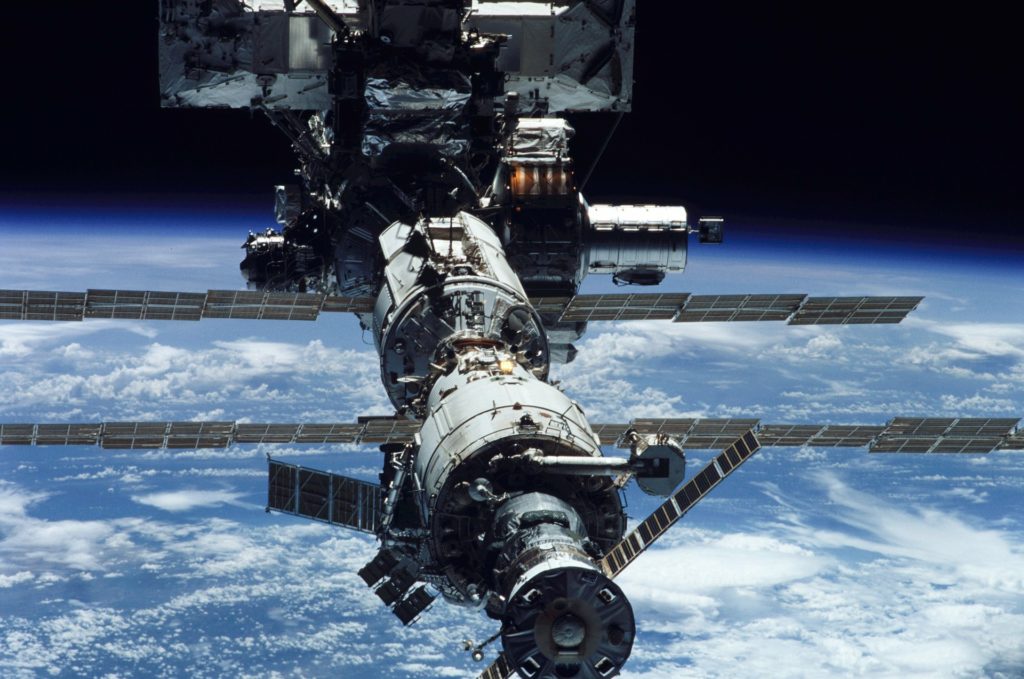
The US National Aeronautics and Space Administration (NASA) said on 19 August that a recent upgrade to the communications technology aboard the International Space Station (ISS) will allow astronauts to send and receive data at double the speed they previously could.
The station now supports a 600 megabit-per-second (Mbps) connection, doubling the amount of data that the station can transmit and receive at a time paving the way for similar future upgrades on Gateway, NASA’s upcoming outpost in lunar orbit, and other exploration missions.
The unique environment of the space station allows astronauts to conduct research that would not be possible on Earth, and these experiments and technology demonstrations have become increasingly reliant on high data transfer rates between the station and Earth-bound researchers.
The work that takes place on this orbiting laboratory provides knowledge in human research, experience in long-duration spaceflight, and capabilities for technology demonstrations that could enable future missions.
With a data rate increase, the station will be able to accommodate new experiments and technology demonstrations, NASA said, that require higher resolution images/videos or more detailed data than was previously possible.
The space station communicates with Earth through radio frequency signals using a system of Tracking and Data Relay Satellites (TDRS) and ground-based antennas called the Space Network. The satellites are placed in a high orbit above the Earth, over various strategic locations so that they can relay data to the ground from anywhere in orbit.
Landlines then send the signal to various NASA centres and their computer systems turn it back into readable data. To send data back, the process repeats in the other direction. This all happens with less than a one-second delay in communication.
“NASA’s communications networks play a pivotal role in every NASA mission, enabling data from human spaceflight, space and Earth science research missions and technological demonstrations to reach Earth for the benefit of humanity,” George Morrow, the acting director of NASA’s Goddard Space Flight Centre in Greenbelt, Maryland, said in a statement.
“This increase in data rate capability for the [ISS] underlines our commitment to provide high-quality operational services for NASA exploration missions today and in the future,” he added.
“This project demonstrated that advanced radio frequency waveforms can be used efficiently to increase data rates and improve performance for high-rate communication services,” Risha George, the upgrade project lead for the Space Network, said.
“Operational use of these advanced waveforms proves that they can also be used for future missions, such as on the Gateway, a small spaceship that will orbit the Moon and provide a stepping stone to human exploration on Mars,” she explained.
According to NASA, several components in this global communications system have been upgraded to support the increased data rate, including new digital ground architecture for the Space Network. Technicians updated the station’s software-based modem, improved data processors at a number of NASA centres, and enhanced routers, interfaces, and other equipment and software on the ground.
The circuits and bandwidth of the terrestrial data lines between the various Earth-based components were also upgraded, prior to extensive testing to ensure the upgrades worked correctly. While this was happening, the network continued to provide real-time support to over 40 missions.
“Partnerships like this are crucial to our continued success as an agency,” Penny Roberts, the upgrade project lead for the space station, concluded. “Our continued partnership will transition us to 600 Mbps, and who knows where else we will go together.”


Leave a Reply